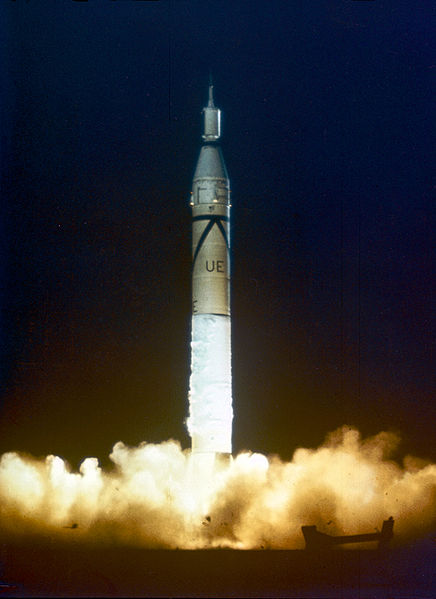In the late evening, just an hour before midnight on January 31st, 1958, the United States launched it’s first satellite – Explorer 1.
Explorer 1 was our answer to Sputnik 1 and 2. At least, it was our successful answer – our previous attempt, Vanguard TV3, ended in a very famous disastrous failure barely leaving the pad before the booster crashed back and exploded!
Explorer 1 was a completely different launch. It used a Juno-1 rocket, one of the many variations of booster developed by the team lead by Wernher von Braun – the legendary rocket engineer brought over from post-war Germany to lead missile development for the United States.

His dreams, of course, were grander – he felt the exploration of space was what rockets were to be made for, not weapons of war. Regardless, he worked on derivatives of the V-2 missile at the request of the government, if only to further research and perfect his design concepts. As fate would have it, his goals would be reached – rocket designs he headed would take us to the Moon, but in 1958, the best he could do was test after test.
Indeed, his team was actually forbidden to launch anything into orbit – the U.S. Government didn’t want a German to be the one to launch the United States first satellite, instead wanting something more “American” to be behind the event. Were it not for this, we could have had an orbit earlier in 1958, but no, we would drag our heels and the Soviets would make the first move.
Von Braun petitioned after Sputnik for his team to get a launch, but instead the chance was given to the Navy, and their Vanguard rocket. The result of the first launch attempt was the aforementioned Vanguard TV-3 failure. It was then that von Braun’s team was given the go ahead. Using booster parts his team had stashed away, in just such a chance situation – a major risk if the team had been caught. The gamble paid off though and with the addition of a simple payload, the Juno-1 lifted off and sent Explorer 1 into orbit.
Explorer 1 would wind up discovering raditation belts around the Earth, now known as the Van Allen Radiation Belts. It would only operate for just over 100 days, but would stay in orbit until 1970. While the scientific research it did was simple, it did have the radiation belt discovery, but more over, what it meant to the pride of the United States, to at least be on par with the Soviet’s in getting something into orbit, was an accomplishment.
There is so much more to be said on this subject though, and maybe I’ll cover it in the future. For now, though, I’ll leave you with the links in the above article, a video, and let that be that.
